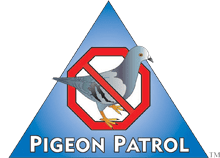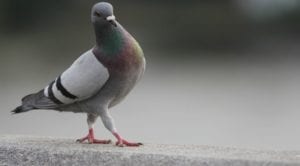
by Pigeon Patrol | Sep 7, 2023 | Bird Spike, Pigeon Predators, Pigeon Spikes, Pigeons, Pigeons in the News, Raccoons, Sparrows, UltraSonic Bird Control
On 8 January 2021, a pigeon was found dead, having been trapped in green netting installed by the Hong Kong Government, in order to deter birds from gathering under the cover of the Star Ferry Bus Terminus.

The green nets, along with bird spikes were installed several years ago to act as a deterrent, but the Hong Kong Pigeon and Dove Rescue (HKPDR), has urged authorities to remove the nets as pigeons have been injured or strangled to death by them. HKPDR said it had seen pigeons previously trapped by bird spikes and had contacted the relevant departments for response, but to no avail.
HKPDR said wildlife management should adopt a humane, animal-based, adding that it had earlier proposed more humane measures including setting up pigeon boxes. But all suggestions had been turned down by authorities. A social media campaign had also recently been launched to urge the Government to remove the green netting.
HKPRD also highlighted that some birds can enter via the holes in the net, but their wings and feet could get hooked onto the netting, causing them significant injuries, and rendering them unable to escape.
On Facebook, the HKPDR wrote:-
“The net is half installed which is causing unnatural and unnecessary death of pigeons. We urge the pier to stop all inhumane treatment and look at effective and humane ways to achieve their goal.”
A photo posted to Facebook by the group shows that the green net did not completely seal off the cover of the bus terminus. Several pigeons were able to stand above the green net and under the cover. HKPDR added that the government added bird spikes underneath the bus terminal cover, noting that it is not only ineffective but pigeons have to bear “unnecessary life danger.”
Source
Pigeon Patrol Products & Services is the leading manufacturer and distributor or bird deterrent (control) products in Canada. Pigeon Patrol products have solved pest bird problems in industrial, commercial, and residential settings since 2000, by using safe and humane bird
deterrents with only bird and animal friendly solutions. At Pigeon Patrol, we manufacture and offer a variety of bird deterrents, ranging from Ultra-flex Bird Spikes with UV protection, Bird Netting, 4-S Bird Gel and the best Ultrasonic and audible sound devices on the market today.
Voted Best Canadian wholesaler for Bird Deterrent products ten years in a row.
Contact us at 1 877-4-NO-BIRD,(604) 585-9279 or visit our website at www.pigeonpatrol.ca
Pigeon/Pigeon Patrol / Pigeons Roosing / Vancouver Pigeon Control / Bird Spikes / Bird Control / Bird Deterrent / PIgeon Deterrent / Surrey Pigeon Control / Pest / Seagull deterrent / Vancouver Pigeon Blog / Birds Inside Home / Pigeons in the cities / Ice Pigeons / What to do about pigeons / sparrows, Damage by Sparrows, How to Keep Raccoons Away, Why Are Raccoons Considered Pests / De-fence / Pigeon Nesting / Bird Droppings / Pigeon Dropping / woodpecker control / Professional Bird Control Company / Keep The Birds Away / Birds/rats/seagull/pigeon/woodpecker/dove/sparrow/pidgeon control/pidgeon problem/pidgeon control/flying rats/pigeon problems/ bird netting/bird gel/bird spray/bird nails/bird guard
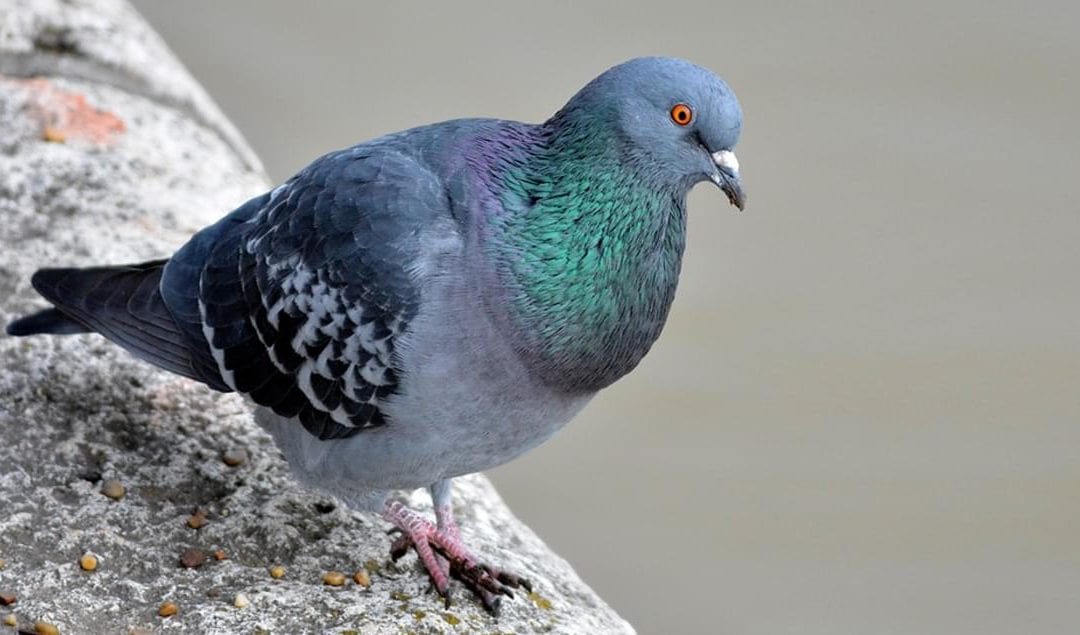
by Pigeon Patrol | Sep 7, 2023 | 4-S Gel Bird repellent, Animal Deterrent Products, Bird Deterrent Products, Bird Law, Bird Netting, Bird Spikes
The development of cities and urban sprawl has made room for wildlife inhabiting human environments. Among birds, feral pigeons (Columba livia domestica) are often present in large numbers in the cities. Problems related to pigeon occurrence result in economic loss and health issues for humans. There are different methods of controlling pigeon populations in urban areas. In this study, we compared three techniques that can be used for pigeon pest control. In two urban industrial sites in Hungary, we used trapping, falconry (in both Study Area 1 and 2) and mist-netting (only in Study Area 2) to remove pigeons. We compared the effectiveness and limitations of each method. Our results show that over 105 days in Study Area 1, we managed to remove 173 individual pigeons. We did not find a significant difference between the effectiveness of trapping or falconry. In Study Area 2, the overall number of pigeons removed was 1412 over a period of 150 days. There, we managed to catch significantly more birds by netting than by trapping or falconry, but the latter two did not differ statistically. We recommend a combination of techniques for pigeon control. Mist-netting can be the most effective way for direct pigeon removal, whereas trapping is an easier but less efficient method to catch pigeons. Falconry is the least efficient in pigeon catching and requires the most investments, but the bird of prey may chase the pigeons away for a short time.
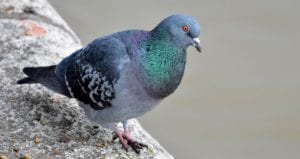
Source
Pigeon Patrol Products & Services is the leading manufacturer and distributor or bird deterrent (control) products in Canada. Pigeon Patrol products have solved pest bird problems in industrial, commercial, and residential settings since 2000, by using safe and humane bird
deterrents with only bird and animal friendly solutions. At Pigeon Patrol, we manufacture and offer a variety of bird deterrents, ranging from Ultra-flex Bird Spikes with UV protection, Bird Netting, 4-S Bird Gel and the best Ultrasonic and audible sound devices on the market today.
Voted Best Canadian wholesaler for Bird Deterrent products ten years in a row.
Contact us at 1 877-4-NO-BIRD,(604) 585-9279 or visit our website at www.pigeonpatrol.ca
Pigeon/Pigeon Patrol / Pigeons Roosing / Vancouver Pigeon Control / Bird Spikes / Bird Control / Bird Deterrent / PIgeon Deterrent / Surrey Pigeon Control / Pest / Seagull deterrent / Vancouver Pigeon Blog / Birds Inside Home / Pigeons in the cities / Ice Pigeons / What to do about pigeons / sparrows, Damage by Sparrows, How to Keep Raccoons Away, Why Are Raccoons Considered Pests / De-fence / Pigeon Nesting / Bird Droppings / Pigeon Dropping / woodpecker control / Professional Bird Control Company / Keep The Birds Away / Birds/rats/seagull/pigeon/woodpecker/dove/sparrow/pidgeon control/pidgeon problem/pidgeon control/flying rats/pigeon problems/ bird netting/bird gel/bird spray/bird nails/bird guard
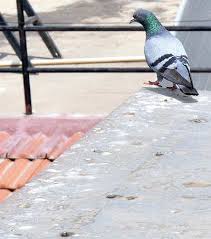
by Pigeon Patrol | Jul 26, 2023 | Bird Spike, Pigeon Predators, Pigeon Spikes, Pigeons, Pigeons in the News, Raccoons, Sparrows, UltraSonic Bird Control
Pigeons like to land, roost, nest, and make a mess of your roof and they’re not easy to get rid of. Persistence, bird deterrents, and bird exclusion is the key.

Get rid of pigeons on the roof by removing food and water
Remove all food and water sources and never feed the pigeons! In addition, don’t let your neighbors feed the pigeons. The pigeons can eat at your neighbors and nest on your roof!
Pigeons mainly like to eat seeds and grains such as oats, wheat, corn, cereal, sorghum, rice, beans, barley, millet, peas, and sunflower. They also like to eat food scraps left behind by people, including bread crumbs and popcorn. Birdseed is their favorite because it contains a variety of seeds and grains.
When grains or seeds aren’t available pigeons will eat fruit, greens, and occasionally insects, earthworms, and snails. They especially like apples, grapes, berries, lettuce, spinach, and sprouted seeds.
Pigeons need a constant water source. If water isn’t readily available they will leave to find a more suitable place to live. They can find water in birdbaths, gutters, pools, decorative water fountains, puddles, ponds, streams, and even leaves after a rain storm.
Easy to use deterrents to get rid of pigeons on the roof
Aluminum foil, bird deterrent tape, shiny Mylar balloons, wind propelled shiny spinning objects, and plastic decoy scare owls are scary objects to pigeons. Place scary objects on the roof, under the eves, or on the patio. Pigeons don’t like or feel comfortable with scary objects next to their nesting area. They would rather live in a more peaceful environment. One thing to remember, when installing scary objects, is to move them around on a regular basis. Objects that stay in one position don’t scare pigeons.
Wind chimes may deter pigeons. You can give it a try. Pigeons have sensitive hearing and the noise from wind chimes can actually hurt their ears. Pigeons don’t particularly like to nest where loud noises come and go.
Sticky bird gel can also deter pigeons. Apply the sticky gel to your roof where the pigeons are landing and roosting. The gel will make the area uncomfortable for the pigeons to roost.
Metal bird spikes to get rid of pigeons on the roof
Metal anti bird perching spikes can be effective in the right circumstance. They can work pretty well depending on the location you put them. Install them on rooftop edges, ledges, chimneys, and anywhere you see the pigeons land, roost, or nest. Metal bird spikes are mostly maintenance free and can be a permanent solution to deter pigeons from your roof.
Metal anti-perching spikes are harder to install and are not aesthetically appealing.
Wire screens or mesh to get rid of pigeons on the roof
Exclusion is the best solution to pigeon problems in alcoves, around chimneys, under solar panels, on vents, and many other places on the roof. Exclusion with wire bird screen and mesh do offer a permanent solution to pigeon nesting problems.
Our company deals with pigeons nesting underneath solar panels on a daily basis. Solar panels are generally raised 5-12 inches above shingled or tiled roofs, thus creating a void between the panel and the roof. Pigeons can easily go underneath the panel to nest, poop, and make a noticeable and destructive mess. Most, if not all, rooftops that have solar panels need to have pigeons excluded from getting under the solar panels.
Installing wire bird screens or mesh can be difficult and hazardous. It requires being on the roof with tools, a lot of bending over (which is physically demanding), cutting the wire to the proper dimensions, and stapling or screwing on the wire. It is not advised for a home or business owner to install wire screens or mesh because it isn’t safe. You can fall off the roof and get seriously injured or die. To use this method, please hire a professional bird control company.
Bird netting to get rid of pigeons on the roof
If your roof is large and flat, bird netting is an excellent method to use to keep pigeons off your roof. It physically blocks the birds from the roof. If the birds can’t get on the roof, they can’t roost or nest. Bird netting is an exclusion method primarily used for large commercial bird and pigeon control.
A professional bird control operator should install bird netting. If not installed correctly the pigeons can still land on the area and get trapped, as well as other birds. This is cruel. Please hire a professional bird control company for bird netting. It will cost money but it is the safest and most humane way to have bird netting installed.
Remove bird nesting materials and droppings
It is important to remove all pigeon nesting and feces prior to excluding pigeons. Nesting materials and droppings left on the roof will continue to cause damage.
If the roof has a pitch, using a power washer is generally the best way to get rid of pigeon waste. Put a tarp on the ground next to the roof to catch the debris as it is rinsed off the roof. It will be much easier to clean up the pigeon feces on the ground if it is contained on a tarp. Wear a mask to prevent inhaling fumes from pigeon feces and wet the feces down before rinsing off. Histoplasmosis is zoonotic disease that can be found in pigeon feces. Zoonotic diseases are caused by harmful germs like viruses, bacteria, parasites, and fungi that are spread between animals and people.
If the roof is flat, you will have to wet the roof down (to prevent spreading contaminants and disease through the air), then rake and sweep up the pigeon waste prior to rinsing. Again, wear a mask to prevent inhaling fumes from pigeon feces.
Please be careful or better yet, call a professional. Using a power washer on the roof can be slippery and dangerous. Inhaling noxious pigeon feces can cause disease – it is a biohazard.
Importance of discouraging pigeons from nesting on your roof
Pigeons spread disease. There are over 60 diseases birds and their droppings can carry. Some of the diseases from pigeon droppings include salmonella, toxoplasmosis, cryptococcosis, St Louis encephalitis, E.coli, and more. In addition, fungus can grow in pigeon droppings which can cause histoplasmosis. Histoplasmosis is a respiratory disease that may be fatal. Pigeons are also carriers of pests including fleas, mites, ticks, and lice as well as West Nile virus. All of these diseases can pose a serious threat to human health.
Property damage is a big concern with pigeon nesting and droppings. Nests can clog gutters, ventilation pipes, chimneys, and damage electrical equipment. Damaged electrical wires from pigeon nests can even lead to fires. Pigeon droppings are very acidic. The droppings can actually eat away at the roof structure and cause roof leakage.
Pigeon droppings are unsightly. Nobody likes to see or walk on pigeon droppings.
People can slip and fall where pigeon droppings accumulate. When pigeon feces are fresh or rained on it is slippery.
Call a professional
Installing wire bird spikes, wire screens, wire mesh, or bird netting is difficult and hazardous. People can, and do, fall off roofs. People who fall off roofs get seriously injured and even die. It is best to call a professional bird control company when using these methods. Companies that specialize in removing and excluding bird pests (like pigeons) have the know how and safety equipment to get rid of pigeons in a safe and efficient manner from rooftops, alcoves, solar panels, chimneys, window sills, and other areas.
Source
Pigeon Patrol Products & Services is the leading manufacturer and distributor or bird deterrent (control) products in Canada. Pigeon Patrol products have solved pest bird problems in industrial, commercial, and residential settings since 2000, by using safe and humane bird
deterrents with only bird and animal friendly solutions. At Pigeon Patrol, we manufacture and offer a variety of bird deterrents, ranging from Ultra-flex Bird Spikes with UV protection, Bird Netting, 4-S Bird Gel and the best Ultrasonic and audible sound devices on the market today.
Voted Best Canadian wholesaler for Bird Deterrent products ten years in a row.
Contact us at 1 877-4-NO-BIRD,(604) 585-9279 or visit our website at www.pigeonpatrol.ca
Pigeon/Pigeon Patrol / Pigeons Roosing / Vancouver Pigeon Control / Bird Spikes / Bird Control / Bird Deterrent / PIgeon Deterrent / Surrey Pigeon Control / Pest / Seagull deterrent / Vancouver Pigeon Blog / Birds Inside Home / Pigeons in the cities / Ice Pigeons / What to do about pigeons / sparrows, Damage by Sparrows, How to Keep Raccoons Away, Why Are Raccoons Considered Pests / De-fence / Pigeon Nesting / Bird Droppings / Pigeon Dropping / woodpecker control / Professional Bird Control Company / Keep The Birds Away / Birds/rats/seagull/pigeon/woodpecker/dove/sparrow/pidgeon control/pidgeon problem/pidgeon control/flying rats/pigeon problems/ bird netting/bird gel/bird spray/bird nails/bird guard
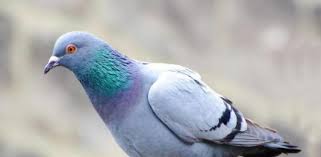
by Pigeon Patrol | Jul 26, 2023 | Bird Spike, Bird Spikes, Columbidae, Doves, history of pigeons, MBCA, pet bird, Pigeon Control, Pigeon Predators, Pigeon Spikes
You could be forgiven for thinking that pigeons ever lived in the wild. They have been such a constant presence in human cities for so long that they are seen as urban creatures to this day. However, their commonness doesn’t mean they are harmless. Pigeons can be just as troublesome as other common pests, and they can be even more dangerous than you probably realize. Learning how you can prevent a pigeon infestation in your property can protect you from these problems.
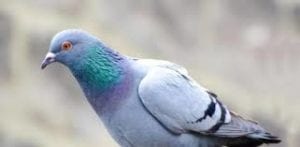
Common But Not Harmless
Pigeons are so common in urban America that most people don’t pay them any real attention. Some people even feed them. It’s this relationship to humans that has allowed pigeons to thrive and reveal their true colors as truly harmful birds. But pigeons haven’t always nested in cities and suburbs, they descend from cave birds that occupied rugged coasts and mountains. Some pigeons still migrate to these natural areas to breed but their reliance on human waste for food and industrial buildings for shelter means pigeons are a permanent fixture in modern life. But make no mistake, pigeons are responsible for the same kinds of damage and danger that other pests are known for.
Damage & Danger Caused By Pigeons
Even though people consider them harmless birds, pigeons have proven time and time again that they are more than just birds picking up breadcrumbs. Pigeons can lead to all of the following problems for humans:
- Disease. Pigeons are known as vermin for a reason, they are carriers of dangerous and fast-spreading diseases like hepatitis and salmonella.
- Parasites. Even if pigeons themselves aren’t carriers of diseases, they can carry ticks and lice that are also harmful and known to transmit pathogens.
- Damage. Pigeons aren’t just a health risk, but a property risk too. With their habit of nesting inside of electrical utilities and roosting inside of people’s roofs, pigeons can cause direct damage and interference to the common amenities of daily life.
- Feces. Not only can pigeons cause damage with their nests, but they can also cause damage to their poop. The highly corrosive droppings can chew through concrete and even metal — not to mention the unpleasant sights and smells that result.
Keeping Pigeons Off Your Property
Since pigeons in Owensboro are everywhere, it’s important to take steps to make your property less attractive to flying invaders in search of shelter or food. Here are some steps you can take:
- Don’t feed them. First and foremost, everyone should take heed of this tip. The more people feed pigeons, the more their populations grow. If you feed them on your property, either directly or via bird feeders, you’re simply inviting them to cause more problems.
- Landscaping. Keeping trees trimmed away from any structures will prevent pigeons from having an easy place to land that’s right next to your property.
- Anti-roosting. There is a wide range of spikes, grates, and covers that are available for commercial and residential properties, which prevent pigeons from landing or nesting.
Take Proper Action
Because pigeons are such a common part of modern life, anyone can fall victim to the problems they cause. Once they’ve taken hold in an area, pigeon populations can grow simply massive. Rather than try to deal with prevention and removal on your own, enlist the help of trained experts who can assist you. At Action Pest Control, our friendly staff can provide you with even more tips to prevent and spot the signs of pigeon damage. If our inspections reveal an infestation, we’ll work to get rid of it and work with you on steps for future prevention.
Don’t get complacent when it comes to pigeons, act today.
Source
Pigeon Patrol Products & Services is the leading manufacturer and distributor or bird deterrent (control) products in Canada. Pigeon Patrol products have solved pest bird problems in industrial, commercial, and residential settings since 2000, by using safe and humane bird
deterrents with only bird and animal friendly solutions. At Pigeon Patrol, we manufacture and offer a variety of bird deterrents, ranging from Ultra-flex Bird Spikes with UV protection, Bird Netting, 4-S Bird Gel and the best Ultrasonic and audible sound devices on the market today.
Voted Best Canadian wholesaler for Bird Deterrent products ten years in a row.
Contact us at 1 877-4-NO-BIRD,(604) 585-9279 or visit our website at www.pigeonpatrol.ca
Pigeon/Pigeon Patrol / Pigeons Roosing / Vancouver Pigeon Control / Bird Spikes / Bird Control / Bird Deterrent / PIgeon Deterrent / Surrey Pigeon Control / Pest / Seagull deterrent / Vancouver Pigeon Blog / Birds Inside Home / Pigeons in the cities / Ice Pigeons / What to do about pigeons / sparrows, Damage by Sparrows, How to Keep Raccoons Away, Why Are Raccoons Considered Pests / De-fence / Pigeon Nesting / Bird Droppings / Pigeon Dropping / woodpecker control / Professional Bird Control Company / Keep The Birds Away / Birds/rats/seagull/pigeon/woodpecker/dove/sparrow/pidgeon control/pidgeon problem/pidgeon control/flying rats/pigeon problems/ bird netting/bird gel/bird spray/bird nails/bird guard
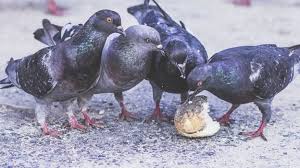
by Pigeon Patrol | Jul 26, 2023 | 4-S Gel Bird repellent, Animal Deterrent Products, Bird Deterrent Products, Bird Law, Bird Netting, Bird Spikes, Columbidae, Doves
How to Deter Birds From the Garden
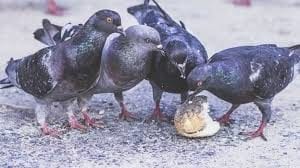
Birds are not picky eaters. They can feed on a number of things: seeds, grains, fruit, breadcrumbs, worms, and more.
Bird control is a hard job, especially if you have a vegetable garden. You’d want to keep birds as far away as possible. Even though it’s not easy, there are a few things you can do.
- Make a scarecrow or use decoy hawks and owls. Also, fake snakes could scare some of the birds.
- Use old CDs as shiny reflective objects to scare the birds. Hang a few of them every couple of meters around your garden.
- Buy or make bird nettings from cord or wire to protect your crops.
- Plants to distract them. You want to keep your crops intact and you’ve lost all hope of keeping the birds away? You can distract them by planting other seductive plants away from your vegetables. Plants like buckwheat, sunflowers, or some berries can be used to attract pigeons and other birds to the opposite side of your garden.
How to Keep Pigeons Away From Bird Feeders
Pigeons are a typical example of a bully bird that doesn’t allow smaller birds to get food. They are larger than most birds you can find in urban areas and this gives them some advantage in the race to get the food people leave behind.
You can keep pigeons and other bully birds away from your bird feeders by making it hard for them to reach it. How? By enclosing the bird feeder with hardware cloth with openings big enough so only smaller birds can get through and feed (5cm should be more than enough).
There are caged-in trays or tube bird feeders sold in garden or hardware stores you can purchase. The tray or tube is placed several centimetres inside of the cage and it makes it difficult for larger bully birds to eat the seeds.
Some bird species, like pigeons, the European starling, house sparrows, feed on the ground. If you remove all food sources from the ground and make a hanging bird feeder under a small shelter, they may get scared to get under the cover. With the lack of food, they will soon stop coming.
How to Get Rid of Pigeons With Poison
Poisoning pigeons and other birds is not recommended. There’s no need to kill the birds. You can simply take some measures to keep them away from your home or business building. A dead pigeon, filled with poison, laying somewhere in your garden might cause you more problems than a live one. Plus, you should consider the chance of poisoning other animals alongside the pigeons. Refrain from using poison as a bird control method, please.
How to Get Rid of Pigeons in Your Garden With Sound
Sounds can prove to be one of the most effective ways to keep birds away. You will need to invest some money to do it the right way but it will be worth it. There are a number of sounds that can do the trick.
Audible repellers produce frightening bird sounds that scare pigeons and other birds. There are different sounds – distressed cries of birds, shrieks of predator birds. The devices can be bought in most gardening stores.
Ultrasonic repellers emit high-frequency sounds that people cannot hear. The sounds are at a specific frequency targeted at birds.
How to Get Rid of Pigeons From Trees
Gather aluminium plates, mirrors, and other shiny objects. Hang them on your trees and they’ll create movements and reflect the sunlight. Thus they will scare off the pigeons and other birds from roosting on your trees.
Put a predator bird statue on the tree to scare the pigeons off. Most professional exterminators rely on this method as well.
Wind chimes can also scare pigeons away with the sound and movement they make, but if the pigeons get used to them they will not hesitate to roost on your trees.
Natural Pigeon Repellents and Control Methods
You have to be careful with the homemade repellents. Birds, especially pigeons are smart animals and can see through your scarecrows and tricks.
Homemade pigeon repellents and other repelling methods should be combined with preventive methods for full effect and protection.
Other natural ways to deal with bird control
Remove food and water sources. Keeping your property clean from seeds, grains and other food remains is a convenient way to have birds and pigeons skip your home and go to your neighbour’s’ yard. This can be done by regularly sweeping floors, keeping your garbage in the garbage can with a closed lid on it.
Gardens should be protected as well, either with decoy predator birds statues, sprinklers, sound repellents, or nets.
Make sure you don’t leave standing water anywhere around your home.
Removing the nest is essential because you are putting your home at risk of getting infested with bird mites.
Homemade Pigeon Repellents
As mentioned above, there are a number of bird repellents that can get the job done. But if you wish to deal with the issue without having to put a fake owl or spikes on your roof, you can try to make some homemade repellents.
1) Repel pigeons with honey – Applying a thin layer of honey to your roof or balcony will inconvenience birds and they won’t roost there. Honey’s stickiness will keep them away as birds do not like sticky surfaces. You can use other sticky products as well. You may have to reapply the sticky substance from time to time because it will wear off.
2) Hose the birds. You can instal automatic sprinkles on your roof or balcony to spray them when they land. Or you can do the work when you notice them. Hosing them a couple of times should be enough to teach them a lesson and keep them away.
3) Spicy pigeon repellent
Pigeons and other birds do not like spices. Which makes it a fantastic natural repellent for all kinds of birds.
4) Pepper powder can be used to repel pigeons from your balcony and roof. Sprinkle more of it on their roosting places and in other places they may roost. You can use black pepper, cayenne pepper or cinnamon powder to keep the pigeons off your property. You will have to reapply it after rainy or windy days.
5) Chilli powder is another spicy repellent that you can use. Throw chilli solution in the birds’ roosting places and watch how they stop coming back. Reapplying it may be also necessary after windy and rainy days. The chilli is also unpleasant to the pigeons and will drive them away from your home.
Take measures to keep birds away from your home now or call an expert to do it for you.
Source
Pigeon Patrol Products & Services is the leading manufacturer and distributor or bird deterrent (control) products in Canada. Pigeon Patrol products have solved pest bird problems in industrial, commercial, and residential settings since 2000, by using safe and humane bird
deterrents with only bird and animal friendly solutions. At Pigeon Patrol, we manufacture and offer a variety of bird deterrents, ranging from Ultra-flex Bird Spikes with UV protection, Bird Netting, 4-S Bird Gel and the best Ultrasonic and audible sound devices on the market today.
Voted Best Canadian wholesaler for Bird Deterrent products ten years in a row.
Contact us at 1 877-4-NO-BIRD,(604) 585-9279 or visit our website at www.pigeonpatrol.ca
Pigeon/Pigeon Patrol / Pigeons Roosing / Vancouver Pigeon Control / Bird Spikes / Bird Control / Bird Deterrent / PIgeon Deterrent / Surrey Pigeon Control / Pest / Seagull deterrent / Vancouver Pigeon Blog / Birds Inside Home / Pigeons in the cities / Ice Pigeons / What to do about pigeons / sparrows, Damage by Sparrows, How to Keep Raccoons Away, Why Are Raccoons Considered Pests / De-fence / Pigeon Nesting / Bird Droppings / Pigeon Dropping / woodpecker control / Professional Bird Control Company / Keep The Birds Away / Birds/rats/seagull/pigeon/woodpecker/dove/sparrow/pidgeon control/pidgeon problem/pidgeon control/flying rats/pigeon problems/ bird netting/bird gel/bird spray/bird nails/bird guard


